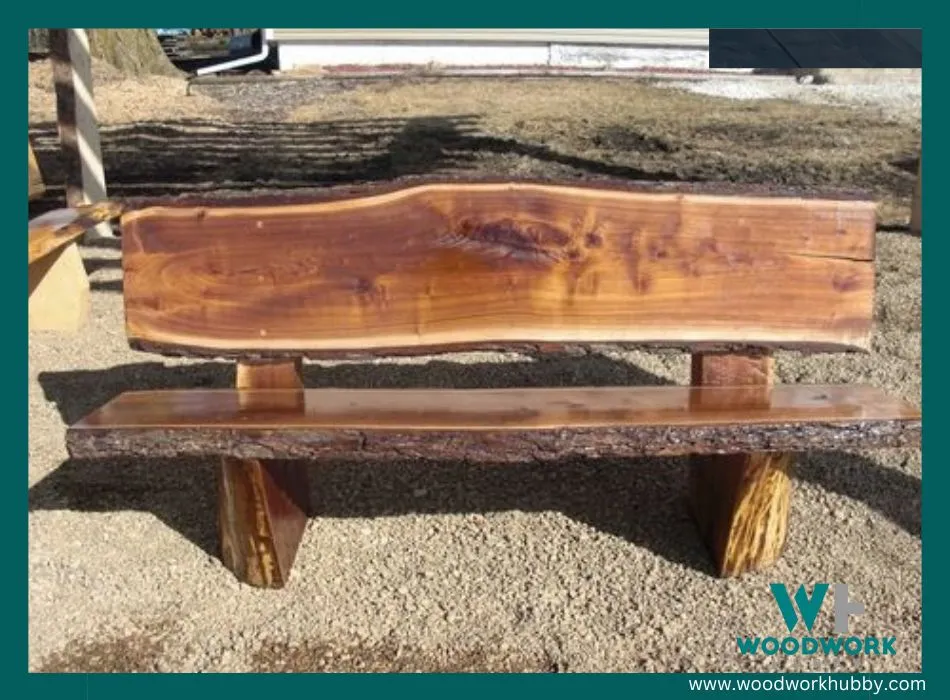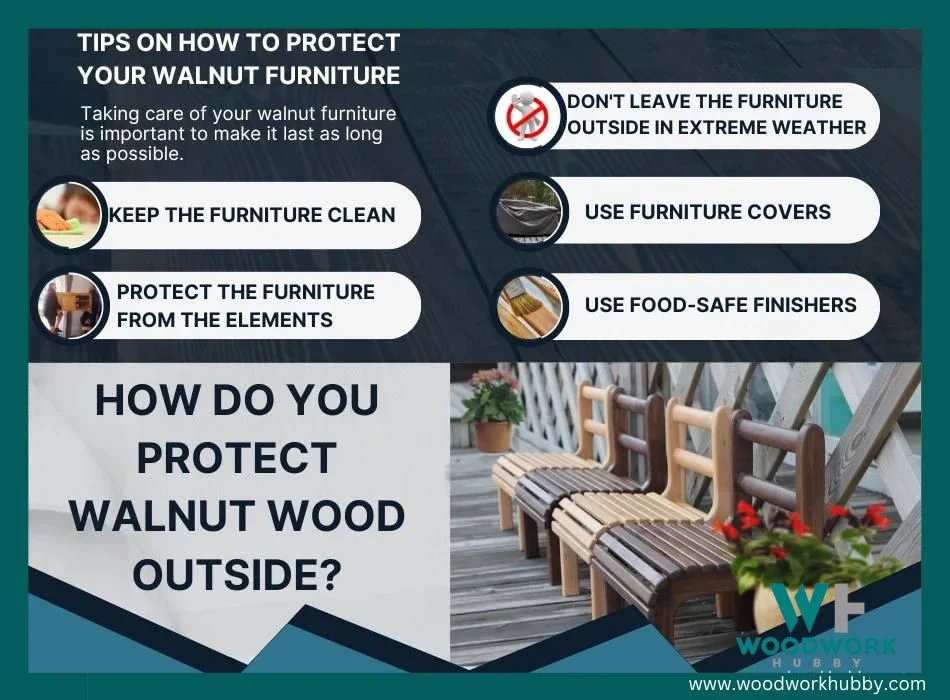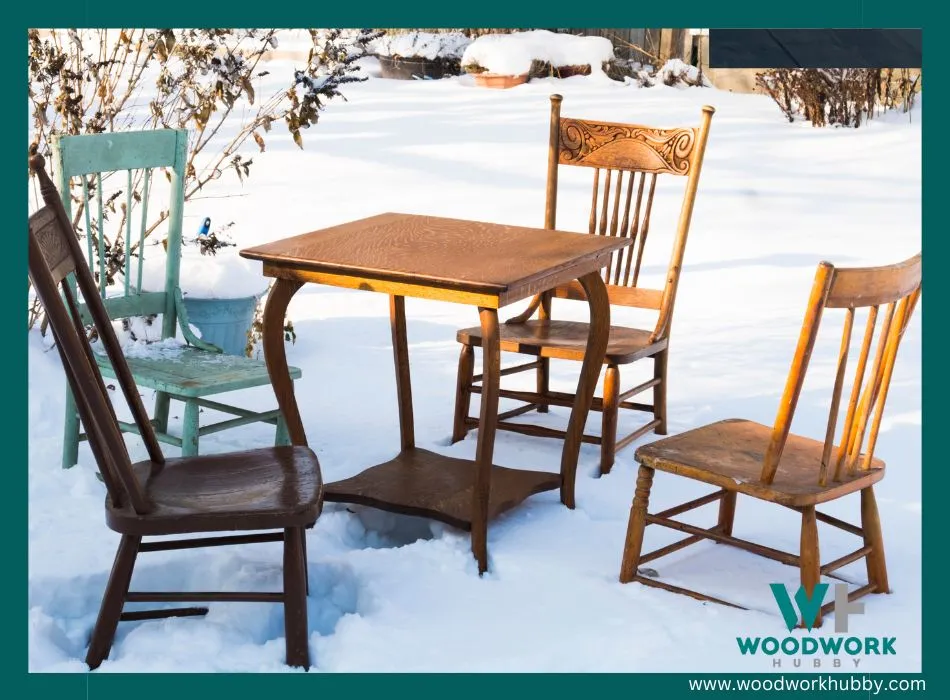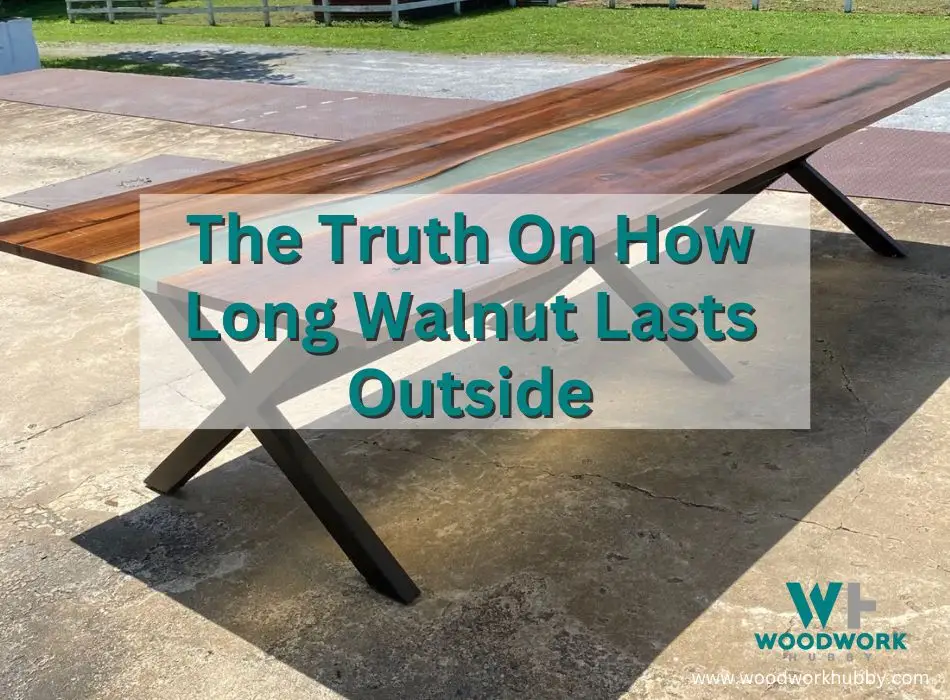There’s a lot of debate about how long walnut wood lasts outside. Some say it only lasts a couple of years, while others swear by its longevity and claim it can last up to 20 years. As a professional woodworker, I will tell you the truth about how long walnuts last outside!
Generally, walnut wood that is untreated will last 9-11 years while treated walnut can last up to 20 years outside. The time frame is very dependent on several different conditions and how well the wood was seasoned. However, rain, snow, and direct sunlight can shorten this time.
In this blog post, I’ll explore the different factors that affect how long walnut lasts outside and provide you with some tips on how to make your outdoor walnut furniture last longer.
Will Walnut Wood Hold Up Outside?
The first question you might ask is, will walnut wood hold up well outside? The answer is yes; walnut wood is a strong and durable hardwood. However, it is important to note that all woods are susceptible to damage from the elements.

While walnut is a strong and durable hardwood, it requires maintenance to keep it looking its best. I’ll go over what you need to do to take care of your walnut furniture later in this article.
But, first, let’s look at factors that affect how long walnut lasts outside.
You may wonder, Is Burning Walnut Wood Toxic? I’ve got the answers you are looking for, so check it out!
Factors That Affect How Long Walnut Lasts Outside
The climate is one of the biggest factors that affect how long walnuts last outside. If you live in an area with a lot of sun and heat, your walnut furniture will likely not last as long as it would in a cooler climate. The same is true if you live in an area that experiences a lot of rain or snow. All of these elements can speed up the deterioration process.
Other factors include:
How Well the Furniture Is Made
Walnut wood is a strong and durable hardwood, but it is important to note that how well the furniture is made will affect how long it lasts. Buying cheap, poorly made walnut furniture will not last as long as high-quality, well-made furniture.
The Type of Finish on Your Furniture

The type of finish on the furniture also affects its longevity. A high-quality finish will protect the furniture from the elements and help it last longer.
If you have a piece of walnut furniture that’s unfinished or has a natural finish, it won’t last as long as one that’s been stained or painted. This is because finishes provide an extra layer of protection against the elements.
The video shows the various kinds of finishing you should use
How You Care for the Furniture
The way you care for your walnut furniture also affects how long it lasts. If you don’t clean and maintain your furniture properly, it will not last as long as it should.
How Do You Protect Walnut Wood Outside?
Taking care of your walnut furniture is important to make it last as long as possible. You should apply a fresh coat of finish every few years to protect it from the elements. A fresh coat is important because it will help seal any cracks or damage.

Here are some tips on how to protect your walnut furniture from the elements:
Keep the Furniture Clean
Unlike other woods, walnut is very easy to clean. You can simply use a damp cloth to wipe down the furniture and remove any dirt or dust.
Pro tip:
When cleaning, use a mild soap and water solution. Avoid using harsh chemicals or abrasive cleaners as they can damage the finish.
Keeping the furniture clean is important because dirt and dust can damage the finish and make it more susceptible to damage from the elements.
Protect the Furniture from the Elements
When not in use, protecting your walnut furniture from the elements is important.
- If you have outdoor furniture, you can buy covers to protect it from the sun, rain, and snow.
- If you have indoor furniture, keep it away from windows where the sun can damage the finish.
- Also, avoid placing it near heaters or fireplaces, as the heat can cause the wood to dry out and crack.
Don’t Leave the Furniture Outside in Extreme Weather
While walnut is a durable hardwood, it’s important to avoid leaving the furniture outside in extreme weather conditions. This includes periods of extremely cold or hot weather. If you must leave the furniture outside, ensure it’s in a shaded area to protect it from direct sunlight.

Use Furniture Covers
If you’re going to be away from home for an extended period, it’s a good idea to use furniture covers. This will protect the furniture from the elements and help it last longer.
Use Food-Safe Finishers
If you’re using the furniture when eating, it is possible to accidentally drop food or spill drinks on it. You can use a food-safe finish to protect the finish and make it food-safe. This type of finish is designed to resist staining and damage from food and liquids.
Use food-grade mineral oil to rehydrate your wood without leaving an oily film on the surface. The drawback of this kind of oil is how much upkeep is necessary to maintain the aesthetic appeal of this non-toxic wood finish.
Here is a summary of the best food-safe finishes to use:
| Food-safe finisher | Source | Benefits |
|---|---|---|
| Coconut Oil | Coconut meat | It’s a natural oil that will help protect the wood and give it a nice shine. |
| Linseed Oil | Natural oil | Offers sun and water protection |
| Beeswax | Honeybees | Seals old scratches and can make sun-damaged surfaces disappear. |
| Mineral Oil | Earth’s crust | Easy to apply and doesn’t go rancid. |
Can Walnut Be Used for Outdoor Furniture?
Walnut is a great choice for outdoor furniture because it’s durable and easy to care for. If you choose to use walnut for outdoor furniture, apply a fresh coat of finish every few years and keep it clean and protected from the elements. With proper care, your walnut furniture can last for many years.
What if you want to make garden furniture, you may wonder if walnut is a good choice.
Here’s the truth:
Well, obviously, garden furniture needs to be more than just rot-proof. Additionally, it has to be insect and warp-resistant. So, how does walnut do in those categories?
Unfortunately, not so great.
Walnut is a delicious nut that squirrels love. Additionally, it’s susceptible to insect damage and warping in extreme weather conditions. So, while using walnut for outdoor furniture, it’s important to take extra steps to protect it from the elements.
Does Walnut Wood Fade in the Sun?
Walnut wood is a beautiful, dark wood that’s perfect for furniture. However, one downside of walnuts is that they can fade in the sun.
If you’re going to use walnut for outdoor furniture, make sure to protect it from direct sunlight by doing the following:
Place It in Shaded Areas
Sometimes you can’t avoid placing furniture in direct sunlight. If this is the case, make sure to place it in shaded areas as much as possible. This will help prevent the walnut from fading.
Use Furniture Covers
When you’re not using the furniture, make sure to cover it up. This will protect it from the sun and help prevent fading. The furniture covers are applicable when you’re away from home for an extended period of time.
Is Walnut Wood Weather Resistant?
Walnut is a beautiful hardwood that’s often used for furniture. However, one downside of walnut is that it’s not very weather resistant. The walnut wood weathers to a silver grey if left untreated and exposed to the elements.
If you must leave your walnut furniture outdoors, make sure to protect it from direct sunlight and rain by using furniture covers. Additionally, if you have indoor walnut furniture, make sure to keep it away from windows where the sun can damage the finish.
Taking proper care of your walnut furniture can extend its lifespan and keep it looking beautiful for many years.
Ways To Protect Walnut Wood from Weather
When finishing walnut, proper surface preparation is important. The wood should first have its surface properly sanded. You can do this task by hand using a hand block or a portable, oscillating tool with a sanding attachment.
Woodworkers Source advises hand-sanding the job with a folded piece of 180-grit sandpaper after the initial sanding. Whenever sanding, always sand parallel to the grain.
This eliminates minute cross-grain scratches or swirls that are difficult to see now but will become noticeable in the future if they are not removed. You can either continue with the finishing or add your preferred stain after the last sanding.
After the stain has been applied and has had time to dry, you can apply your chosen topcoat. A few coats of a clear finish will help protect the walnut wood from weathering. You can also add a colored finish if you want to change the look of the wood.
Applying a topcoat is important because it will help protect the wood from UV light, moisture, and temperature changes. It’s important to reapply the topcoat every few years to keep the furniture looking its best.
Walnut is a beautiful hardwood that can add a touch of elegance to any home. However, it’s important to take proper care of walnut furniture to prevent damage from the elements. Following these tips can keep your walnut furniture looking beautiful for many years.
Can Walnut Wood Get Wet?
Class 3 durability and hardness make walnut wood resistant to water and water drops. As a result, walnut wood withstands shrinkage, warping, rotting, and other disasters reasonably well when exposed to water.
However, a good finish is needed because there is always a chance that wood will decay or work. You may increase walnut wood’s water resistance if you treat it appropriately. In this way, problems can be avoided.
Water and other drinks can potentially damage walnut wood because they can cause staining, warping, or discoloration. If you spill something on the wood, wipe it up immediately to avoid any potential damage.
If you take proper care of your walnut furniture, it can last for many years. However, it’s important to keep in mind that walnut is not as weather-resistant as other hardwoods, so you should take care to protect them from the elements.
How to Treat Walnut Wood for Outdoor Use
Now that you know how to take care of walnut wood, you may be wondering if it’s possible to treat it for outdoor use.
It is possible to treat walnut wood for outdoor use, but it’s important to keep in mind that the process is not reversible. Once you treat the wood, it will no longer be suitable for indoor use.
Treating walnut wood for outdoor use involves the following:
Applying Wood Sealers
Wood sealers are one of the most common and sure ways to treat wood for outdoor use. They work by creating a barrier between the wood and the elements, which helps to protect the wood from damage.
There are two types of wood sealers: water-based and oil-based. Water-based sealers are easier to apply and clean up but don’t last as long as oil-based sealers. Oil-based sealers provide better protection against the elements but are more difficult to apply and clean up.
If you are a fan of using wooden cutting boards in your kitchen, you may be wondering, is walnut wood food safe? Check out my detailed findings!
Applying Oil Finishes
You may be wondering how individuals waterproofed wood before plastic-based sealers were introduced. The explanation is that they would apply various oil finishes to outdoor wood. Giving your wood one of these hand-rubbed oil finishes isn’t that difficult, and they have the added benefit of making the wood seem nice.
The two most common types of oil are used to finish wood.
- Linseed is produced by the flax plant.
- Tung oil is obtained from the tung tree.
It’s important to read the instructions on the product label before you begin because each product is different and should be used according to the manufacturer’s instructions.
Once you’ve applied the sealer or topcoat, you should allow the wood to dry completely before using it outdoors. This process can take up to 24 hours, so be sure to plan.
Final Thoughts – The Truth On How Long Walnut Lasts Outside
Walnut wood is durable and can last many years if properly cared for. However, it’s important to keep in mind that walnut is not as weather-resistant as other hardwoods. If you take the time to treat your walnut furniture for outdoor use, you can enjoy it for many years to come.
I hope this article has been helpful. If you have any questions, please feel free to leave a comment below, and I’ll be happy to help.




